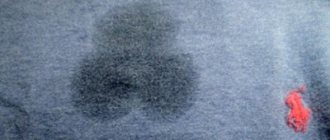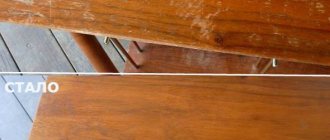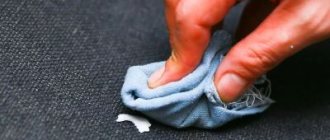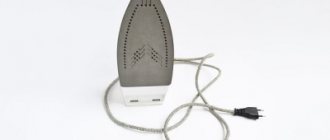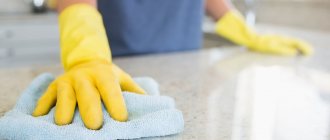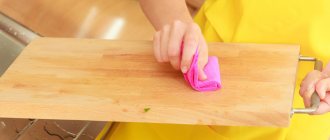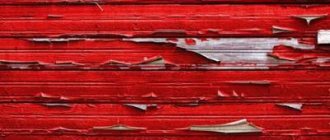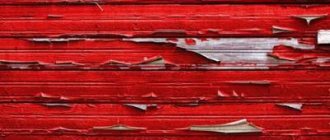Solid wood kitchen facades experience all the difficulties of everyday cooking in the most popular room of your apartment, and quickly lose their original presentation. At the same time, natural material is not only a symbol of the comfort of your home, but also testifies to your love for natural and luxurious interior elements; read a review of reviews about solid wood kitchens on our website. We'll talk about how to restore a kitchen with wooden doors to its former glory in this useful article on the kitchen ordering website Kitchen Bel. Over time, stains and stains from grease and steam appear on kitchen facades made of natural wood, which are difficult to clean, so it is best to clean the kitchen periodically, for example, several times a month.
If you do not want to use the front panels of kitchen furniture made of natural material, you can use a simple and proven method for cleaning - use a solution based on baking soda. To prevent the harmful effects of an unfavorable kitchen environment, you can resort to polishing the wood and your solid wood kitchen will look almost like new.
Options for kitchen facades
For the production of kitchen furniture, wood, plastic, glass, including frosted glass, MDF, chipboard (plain and laminated) are used. Each material has its own characteristics that should be taken into account when starting general cleaning.
Wooden facades are difficult to clean. To wash away grease and other contaminants, use soft, lint-free wipes and special compounds for wood. After cleaning, wipe all surfaces dry and treat them with wax or polish. This will protect the wood from dust and other contaminants.
The plastic set is the simplest and most unpretentious in terms of maintenance. It is resistant to moisture and organic substances. This not only makes it easier to maintain the facades, but also guarantees them a long service life while maintaining a presentable appearance. You can wash off grease from plastic in the kitchen using special products or traditional methods without fear of damaging the material.
To clean glossy MDF facades, do not use hard sponges or substances with abrasive particles. They scratch the surface and spoil the aesthetic appearance of the furniture. When working with gloss, give preference to soft cloths and gentle detergents. After cleaning, rub the surfaces well to restore their original shine.
Regardless of the material of the kitchen set, do not use aggressive chemicals, substances with large abrasive particles, hard brushes or sponges to clean it. This will lead to damage to the surfaces and loss of presentable appearance.
Pollution prevention
The main condition for maintaining cleanliness in the kitchen is regular cleaning. Any grease that has settled on the surface can be easily washed off with a damp sponge soaked in dish soap. But when the plaque becomes covered with dust and is absorbed by furniture, it is much more difficult to deal with.
How to remove grease from kitchen furniture
To keep kitchen fronts always clean, follow these rules:
- Clean kitchen surfaces every day after cooking. It will take 10-15 minutes, but in the future you will save time spent on general cleaning.
- Install a powerful hood. Soot settles on the surface due to poor ventilation and gets dirty 2-3 times faster.
- Give preference to kitchen furniture in light colors. Dirt is more visible on such surfaces, which encourages timely cleaning.
- Use furniture protectors to prevent grease from settling on the front of the furniture.
Proper and regular care will help keep your kitchen cabinets clean and extend their life to the delight of all family members.
Lemon acid
Lemon easily removes stains, grease, scale, lime and plaque.
How to use:
To treat kitchen furniture, mix 15 g of acid with a liter of water. Pour the solution into a spray bottle and spray all surfaces thoroughly. Wait half an hour and go over the facades with a sponge.
Nuances
: For new stains, a regular slice of lemon will suffice. Cut a piece and rub it generously onto the surface. And then the mechanism is still the same - wait, wash and dry. The light and fresh aroma will be a pleasant bonus.
Unsplash
Method 1. Scheduled weekly cleaning
1
Prepare a vinegar-based solution. Mix a cup of cooking vinegar with a cup of warm tap water. Such a gentle natural solution can renew solid kitchen facades beyond recognition. It will not damage the paintwork or the natural wood base. If you can't stand the strong smell of vinegar, you can try using a gentle soap solution, or, even more effective, a dishwashing detergent (grease-breaking) solution. To do this, mix a teaspoon of dishwashing detergent (Fary, Drop, etc.) in a cup of warm tap water. Under no circumstances should you use universal cleaning products for kitchen and other interior surfaces to clean solid wood facades. With their bioactive ingredients, they can cause irreparable damage to the paintwork and tinting of kitchen facades.
2
After several days of active use of the stove, wipe the facades. Dirt and food particles can settle on the fronts of kitchen cabinets after each time you prepare food. If you are not lazy and start wiping the surface of your kitchen doors, your furniture will retain the presentable appearance it had when you purchased it. Dip a piece of soft cloth into the solution, wring it thoroughly to remove excess liquid and then gently wipe the fronts and bottoms of kitchen wall cabinets. If you leave drops of moisture from the solution on the surfaces, they will do you more harm than good. The cloth with which you wipe the kitchen surface should be damp, but under no circumstances wet! If you wipe the surface of the facades with a vinegar solution, the unpleasant vinegar smell will disappear from the kitchen after briefly airing the room, after the treated surfaces have completely dried.
3
Wipe the fronts and finished surfaces of kitchen cabinets with a clean, dry cloth. To ensure that an active vinegar or soap solution removes dirt from surfaces without causing harm or leaving streaks, wipe the surfaces with a dry, clean cloth.
4
Periodically clean not only the outside surfaces, but also the inside of your kitchen cabinets. Spices and various food additives that are stored in our kitchen cabinets often spill out and stain the shelves, so you should periodically, at least once every two weeks, clean the inside of the cabinets. Remove all jars and packaging that you keep in your cabinets. First, sweep away all the dirt with a soft brush, then wipe the shelves with a mild vinegar or soap solution. Then dry the cabinets with a clean towel. Now you can return all the kitchen utensils that you took out while cleaning to their place. If you have to clean up a lot of spilled food additives and spices in your cabinets, you may want to invest in airtight containers or containers made of plastic or glass to store them more carefully. Moreover, airtight containers with rubber seals will protect food, nuts and spices from food moths and cockroaches. To continue to keep the inside of your custom kitchen cabinets clean, you can place rubber mats on the shelves, which are sold in furniture hardware stores. To maintain cleanliness and order, it is enough to simply and carefully remove these rugs, wash and dry them, and then return them to their original place.
5
Wipe dust from solid wood facades and cabinets at least once a week. To prevent dust from accumulating on the facades and body of kitchen cabinets, and without having to resort to thorough cleaning, wipe vulnerable surfaces with a soft, dry cloth. As they say, a disease is easier to prevent than to treat - this axiom also applies to maintaining cleanliness in your favorite corner of the house.
Warning
When starting to clean furniture, carefully read the instructions to make sure for which surfaces the product is intended.
Always test the effect of the drug on a small area that is hidden from view, so that if it fails, the appearance will not be damaged. Only after such a test can you begin to clean the item.
For polished furniture, do not wipe with a damp cloth, as this will dull the shine of the surface.
Do not use abrasive brushes or sponges that will damage the wood surface. The desire to clean dirt from furniture can quickly result in material damage. Try to avoid excessive moisture in wood flooring.
The best equipment: rags and sponges for cleaning grease from kitchen units
For general cleaning in the kitchen, a large number of special equipment is produced. And housewives often buy the wrong devices that are suitable for cleaning kitchen units from grease.
Even when choosing an ordinary rag, a lot of doubts arise. After all, glossy kitchen surfaces should be cleaned so that there are not only greasy stains left on them, but also smudges and streaks.
A melamine sponge is great for streak-free cleaning. This is an effective tool against difficult stains. However, such a sponge is made of hard material and is dangerous for “delicate” surfaces.
The sponge is moistened in a small amount of water, wrung out a little and wiped off traces of fat. Then the grains are removed from the surface. To do this, it is recommended to use a soft cloth.
Small grease stains often appear on the surface of kitchen cabinets. To wash them, it is recommended to cut off a small piece of melamine sponge and apply it only to the dirty area.
You can deal with dirt in the kitchen using a technique such as a steam cleaner. With its help, you can remove any dirt and disinfect the kitchen from germs.
The steam cleaner is suitable for:
- plastic;
- any type of wood;
- MDF, chipboard;
- walls;
- ceramics;
- accessories;
- cutlery.
The steam changes the structure of the stain. Under its action, the fat stain softens and becomes liquid.
Melamine sponge
If previously melamine sponges were sold mainly in the subway and in markets, now they are easy to find in any store. They resemble an eraser in structure and work on a similar principle. They even wash off in the same way as they are used.
How
to use
: Simply rub the grease stains with a sponge.
Nuances
: This method is not suitable for general cleaning. But for small local pollution it is quite good. And the main advantages are low cost, environmental friendliness and complete harmlessness.
How to clean varnished surfaces
Abrasives are not suitable for varnish at all. Aqueous solutions, such as soap, are also not recommended, because they can promote peeling of varnished coatings. As a traditional method, you can use baking powder diluted with water as a cleaning composition. With this gruel you need to vigorously rub the greasy deposit and remove its remnants using a damp and then dry cloth.
If you are not sure about the effect of baking powder, take a store-bought product. It can be liquid or foamy. Do not rub the surface, but leave the product to interact with the plaque. This way you can avoid even the smallest scratches.
Method 2. Thorough cleaning of the solid wood kitchen
1
You will need active dishwashing detergent. This product will remove grease and dirt embedded in the surface of facades and kitchen cabinets without damaging their appearance. As a rule, such a product contains soap and fat-breaking substances; it does not contain alcohol or, especially, aggressive solvents. Dishwashing detergent cleans kitchen surfaces more effectively than vinegar or soapy water, so it's not worth the investment. Many years of experience in use have proven the unconditional effectiveness and safety of dishwashing detergent in acceptable concentrations.
2
Try the product in action first in an inconspicuous place. If the surface begins to deteriorate in the area where you tested the cleaning agent, do not use dishwashing detergent and try using a simple soap solution.
3
Use dishwashing detergent to clean the surfaces of kitchen cabinets and cabinets. If your test described in point 2 was successful, wet a rag with a solution of water and a couple of drops of product and smoothly wipe away the dirt from the cabinets. Do not rub very hard so as not to damage the varnish on the facades. Wipe the surface until the dirt is completely removed.
4
Now wipe the surfaces of the kitchen facades and cabinets with a clean, dry cloth. Remove all streaks and traces of dirt and detergent to ensure your cabinets are completely clean.
5
To remove stubborn dirt build-up, use baking soda. Stains from food liquids can be quite difficult to remove. Baking soda will act as a gentle abrasive that will help remove dried and stubborn stains and will not spoil the appearance of solid wood facades. To prepare a suitable solution, mix baking soda powder with water to form a viscous paste. Soak a rag in the mixture and gently rub the contaminated areas on the surfaces of the kitchen furniture. If this does not help, spread baking soda on the dirty area and leave it for 15 minutes, then gently rub again with a cloth. Instead of a rag, you can use a thin spatula to scrape off dried dirt. However, be careful not to scratch the expensive solid wood fronts, otherwise you will need our kitchen front replacement service!
Universal, gentle and non-standard kitchen cleaning products
A universal method includes a soap-based product with the addition of soda.
Recipe:
- A piece of laundry soap (150 g) is ground on a grater.
- A glass of boiled water (200 g) is added to it.
- Stir with a whisk until completely dissolved (5-7 minutes).
- Next, add 150 grams of baking soda.
- Beat with a mixer for 5 minutes until a fluffy foam forms.
You can apply the product with a toothbrush
This method is very popular among housewives, who claim that it will not be difficult to clean a wooden kitchen from grease.
Gentle products include a mixture of vegetable oil and soda.
To prepare it you should:
- Take 2 parts of soda;
- 1 part sunflower oil;
- Stir all this well.
To clean a wooden kitchen from grease using this method, you need to apply the product to the wooden surface. Use light pressure to wipe away grease stains. This mixture is safe and effective.
Non-standard detergents include:
- Salt;
- An aqueous solution of ammonia;
- Clay.
The last method is the most interesting. The effectiveness of this method is due to the good absorption of fat and clay. In order to clean wooden furniture in the kitchen from grease, the clay must be diluted with table vinegar and brought to a paste. This mixture must be lubricated on wooden surfaces. And after drying, rinse off with warm water.
Household chemicals
Typically, when it comes to cleaning, housewives are divided into two camps: those who prefer to use very effective household chemicals, and those who remove stains with folk remedies. If you fall into the first category, this section is for you.
Household chemicals have an undeniable advantage - they act quickly, efficiently and are able to cope with almost all types of contaminants. There are many options for cleaning surfaces: you can buy Shumanit, Mister Muscle, Silit Beng or Amway. The type of product will depend on the type of contamination and the surface on which it forms.
For example, you should not remove old grease from MDF or plastic-based facades with substances containing abrasive particles or chlorine. In such a situation, it is better to use furniture care products.
In general, when working with purchased substances, several recommendations should be followed:
- The first step after purchasing a cleaning product is to carefully read its instructions. It describes the characteristics of its application in great detail.
- Never exceed the specified concentration. This way you risk damaging the surface.
- Use detergent only with rubber gloves. Otherwise, you risk damaging your hands and getting burned.
- Before starting cleaning, it is better to open the window in the kitchen so that the strong smell of substances does not cause dizziness.
When choosing household chemicals, familiarize yourself with the composition and purpose. There are professional substances and compositions for home use. Choose household chemicals that match the material from which the kitchen cabinets are made. For example, plastic and metal surfaces do not tolerate dust cleaning well - they are easily scratched.
Wood products must be washed with liquid products that do not contain chlorine. This can cause white streaks to appear on the tree. These stains are much more difficult to remove from surfaces than grease from wood kitchen cabinets.
Glass surfaces require special attention and should not be subjected to aggressive cleaning with scrapers or brushes. How to remove grease deposits from glass kitchen cabinets? Soft gels and sprays, and ceramic surface cleaners are the best choice, making glass easier to clean than plastic and wood. Lacquered items will be cleaned with products containing ammonia.
Grease stains make the kitchen look untidy and cluttered. The longer they remain on the surface, the worse they wash off, leaving behind sloppy dark spots. We told you about how to clean kitchen cabinets from grease using folk remedies and household chemicals. Of course, it is best to wet clean the kitchen every day so as not to leave any chance for grease drops.
How to clean MDF kitchen furniture
You can clean furniture made from MDF using both traditional and professional methods.
MDF-based facades should be washed with products that do not contain abrasives and chlorine. You can first dissolve the active detergent in water and wipe the facades with this substance. When combined with water, it will become less active and will not damage the aesthetic appearance of the kitchen.
Mustard powder is suitable for MDF furniture. Or you can use a mixture of vinegar and lemon juice. This composition will carefully remove stains even in corners and hard-to-reach areas of facades. Add a little alcohol to the mixture to achieve shine and a disinfecting effect.
Spending a few minutes cleaning every day will prevent stains from sticking around for too long. After cleaning, always remove equipment and ventilate the room.
Polishing the cleaned façade
1
Use furniture polish or wax. The use of a polish specially designed for this purpose will give shine to solid wood facades, and will also emphasize the characteristic structure of natural wood. Most furniture polishes impart a noticeable shine and mirror effect to surfaces, the degree of which you can control as you apply them to the surface. You must decide for yourself how much your facades should sparkle, depending on your kitchen interior.
2
Before using polish, make sure your cabinets and cabinets are perfectly clean. If you apply polish to a dirty surface, you will cause even more damage to the furniture than if you did nothing at all. Before polishing surfaces, wipe them dry with a clean, dry cloth.
3
Furniture should be polished with a clean, dry cloth. Use a soft towel or microfiber cloth to avoid scratching the surface.
4
Apply polish to small areas of the surface in stages. Polish a small fragment of the facade, then move on to the next one so as not to miss a centimeter of the surface. Rub the polish in smooth, soft circular movements.
5
Polish the entire front surface with a new, unused piece of clean cloth. This way you will remove excess polish from the surface, remove stains and give the surface even more shine. Polish and rub with a dry cloth section by section of your cabinet fronts or sides until you have achieved a shine on all kitchen cabinetry.
Special means
If folk remedies do not help, buy professional chemistry. Most cleaning formulas are formulated for specific materials, so they remove even stubborn stains gently and safely.
Amway Home Kitchen Cleaner
Liquid product for combating fresh dirt, old grease and soot. Country of origin: Belgium. Suitable for all surfaces except wood, marble and stone. Contains no chlorine, alkalis or caustic acids. Directions for use: mix the concentrate with water in a ratio of 1:3, apply to dirt using a spray bottle. Price for a 500 ml bottle from 500 rub.
Grease remover Bagi Shumanit
Spray to remove congealed fat, carbon deposits and soot. Country of origin: Israel. Suitable for cleaning stoves and grills, hoods, kitchen aprons, pots and pans. Cannot be used on aluminum, Teflon or painted surfaces. Directions for use: apply the product to the contaminated surface, leave for 30–60 seconds. Wipe with a damp cloth and rinse with water. 400 ml of spray is enough for about 100 cleanings. Price from 400 rub.
Cillit Bang Anti-grease
Spray for removing burnt food and oil stains. Country of origin: Russia. Suitable for difficult surfaces, including marble and natural stone, but cannot be used on wooden furniture. Directions for use: spray the spray onto the contaminated surface and leave for 5 minutes. Then wipe with a sponge and rinse with a wet cloth. A 750 ml bottle costs from 200 rubles.
Mr Muscle Kitchen Expert
Spray to get rid of burnt fat, oil splatters and dried sauce stains. Country of origin: the Netherlands. Harmless to any furniture, sinks and stoves. Directions for use: spray the liquid, leave for 30 seconds and remove with a damp cloth. If the surface is wood, painted or aluminum, rinse off immediately. A 500 ml bottle costs from 250 rubles.
Cleaning the refrigerator, oven, microwave, multicooker
Washing household appliances takes a lot of time. This is a very painstaking job, but if you have the knowledge and experience, you can make the kitchen the face of your home. For the purpose of disinfection, dilute water with bleach, wipe the walls, household appliances, and floors. It is advisable to treat all visible surfaces.
The refrigerator is often left unattended with drips and dirty stains from hands, and even with odors hovering inside the chamber. Small household appliances usually become covered with a layer of dust due to infrequent use. You can cope using the same folk method - vinegar and water in 1:1 proportions, the best medicine.
The washing machine (by spinning it at least once a month with citric acid) can be protected from the formation of scale and bacteria. The microwave oven and oven deposits are cleaned from greasy splashes using a bowl of water and lemon. It is necessary to place a bowl of water with the addition of lemon juice in the devices and turn on the maximum temperature. As soon as evaporation begins to occur, turn off the device and leave until it cools down. Then wipe with a clean cloth using grease remover.
